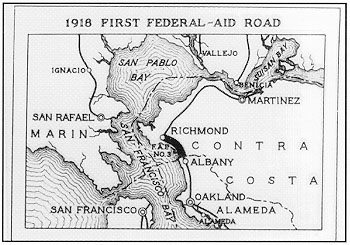January 1
| 1970 |
President Richard Nixon signs the National Environmental Policy Act of 1969, saying, "The 1970's absolutely must be the years when America pays its debt to the past by reclaiming the purity of its air, its waters and our living environment. It is literally now or never." The statement of purpose begins: "To declare a national policy which will encourage productive and enjoyable harmony between man and his environment." "There is a new philosophy underlying the highway program. It is predicated on the fact that social responsibility is an important aspect of highway building . . . . We must be concerned with the effects highways may have on the people living in the areas traversed, on their neighborhoods, their environment, their institutions and their resources." |
| 1927 |
BPR announces the location of routes designated as part of the U.S. highway system. AASHO had approved the locations at its annual meeting on November 11, 1926, but public announcement was withheld until maps could be prepared and issued today. |
| 1970 |
The Highway Users Federation for Safety and Mobility is formed by the consolidation of the Automotive Safety Foundation, the National Highway Users Conference, and the Auto Industries Highway Safety Committee. |
| 1971 |
President Richard Nixon signs the Uniform Relocation Assistance and Real Properties Acquisition Policy Act of 1970 "to establish a uniform policy for the fair and equitable treatment of persons displaced as a result of Federal and federally assisted programs in order that such persons shall not suffer disproportionate injuries as a result of programs designed for the benefit of the public as a whole." |
| 1974 |
In the midst of an energy crisis touched off by conflict in the Middle East (see October 17, 1973), President Richard Nixon signs the Emergency Highway Energy Conservation Act, establishing a maximum national speed limit. No highway projects may be approved in any State having a maximum speed limit over 55 m.p.h. The Act, part of a nationwide effort to save oil, is a result of an oil embargo imposed by the Organization of Petroleum Exporting Countries that forced Americans into long lines at gas stations. President Nixon estimates the new speed limit can save nearly 200,000 barrels of fuel a day. (Also see November 28, 1995.) 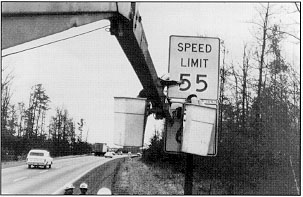
|
January 3
| 1908 |
OPR completes work on a macadam object-lesson road built on the State Fair Grounds in Sedalia, MO. Work on the 2,945-foot road from 16th Street to the administration building began on August 1, 1907. The final road, built on a sticky gumbo soil, is 24 feet wide, with a depth of 4 inches at the sides and 6 inches at the center. With labor varying from $1.50 to $2.50 and animal teams at $3.50 per day, the road cost $6,731.82. |
January 4
| 1965 |
In his State of the Union Address, President Lyndon Johnson calls for, "A new and massive effort to landscape highways and provide places of relaxation and recreation wherever our roads run." He adds that the beauty of America "has sustained our spirit and enlarged our vision." |
| 1975 |
President Richard Nixon signs the Federal-Aid Highway Amendments of 1974, establishing the Off-System Roads and Access to Lakes Programs, and continuing the temporary maximum speed limit of 55 m.p.h. by prohibiting Federal-aid project approvals in States not in compliance. |
| 1977 |
Secretary of Transportation William T. Coleman, Jr., approves Federal-aid for construction of controversial I-66 from the Capital Beltway to the District of Columbia. As approved, I-66 will be a four-lane, limited access highway with Metrorail's Vienna line in its median. Heavy duty trucks will be excluded, and during peak hours, traffic in the peak direction will be limited to buses, automobiles with four occupants, emergency vehicles, and Dulles Airport traffic. |
| 1989 |
Administrator Robert Farris approves a revised "Pavement Policy for Highways," which covers selecting, designing, and managing Federal-aid highway pavements in a cost-effective manner. Each State highway agency is to have a pavement management system based on concepts described in AASHTO's Guidelines on Pavement Management (1985). |
| 1983 |
President Ronald Reagan signs the Surface Transportation Assistance Act of 1982, which increases the gasoline and diesel tax by 5 cents per gallon (the first increase since 1961), and establishes the Motor Carrier Safety Assistance Program. The added revenue helps reverse the 1970's trend that saw highways and bridges deteriorating faster than they could be repaired. Also, Section 105(f) provides that 10 percent of the funds authorized to be appropriated by the act shall be expended with disadvantaged business enterprises. "Common sense tells us that it will cost a lot less to keep the system we have in good repair than to let it disintegrate and have to start over from scratch. Clearly, this program is an investment in tomorrow that we must make today." |
January 7
| 1907 |
In deciding Wilson v. Shaw, a case involving Federal authority to construct the Panama Canal, Supreme Court Justice David Brewer writes that based on Supreme Court precedents, "These authorities recognize the power of Congress to construct interstate highways" under the constitutional right to regulate interstate commerce. This decision effectively ends the debate over whether the Federal Government can fund road projects. |
| 1957 |
Administrator John Volpe's Washington Headquarters reorganization goes into effect to match needs of the Interstate Highway Program. In addition, consistent with terminology used in other Federal Agencies, BPR Division Offices became Region Offices and District Offices in each State became Division Offices. |
| 1958 |
The first post-1956 Interstate Cost Estimate is transmitted to Congress--total cost is estimated as $37.6 billion (Federal share: $33.9 billion). |
| 1972 |
FHWA releases the first annual report to Congress on the Special Bridge Replacement Program. It reveals that of the approximately 563,500 highway bridges in the U.S., about 88,900 are considered critically deficient. An estimated 24,000 of these deficient bridges are on the Federal-aid highway system. More that 400,000 of the Nation's bridges were built before 1935. |
| 1991 |
Administrator Thomas Larson sends a memo entitled "Moving FHWA Into the 21st Century," to all employees. With the Interstate era winding down, he announces the start of FHWA 2000--a program to "clearly define a vision of where we want to be in the future, and a plan for how we can get there." 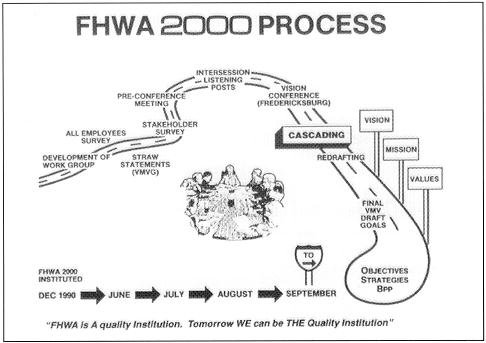
|
January 9
| 1951 |
BPR awards a construction contract for an access road to a projected Atomic Energy Commission plant on the Savannah River southeast of Augusta, GA (construction begins January 15, and the road opens July 1). |
| 1962 |
At the HRB's 41st Annual Meeting, Administrator Rex Whitton presents the George S. Bartlett Award to former Administrator Bertram Tallamy. Whitton says his predecessor "took the post when it was new, and just getting started on the enlarged program, and thus absorbed many of the shocks of the new job." He adds, "He is such a good friend that he recommended to the Secretary of Commerce and insisted that I accept the position that he previously held and that I now hold." |
January 10
| 1967 |
Secretary of Transportation Alan Boyd transmits BPR's report on the Highway Beautification Act to Congress. The report contains an estimate of the act's costs, an estimate of the economic impact of the program, and draft standards, criteria, rules and regulations for reaching agreement with the States on control of outdoor advertising. |
| 1968 |
Administrator Lowell Bridwell announces a new contract with the International Road Federation to survey highway research and development activities in Ceylon, India, Pakistan, and Thailand. The survey is part of a pilot project, begun in 1964, to enable international exchange of highway research findings. |
January 11
| 1945 |
Commissioner Thomas MacDonald testifies on "Housing Developments and Express Highways" before the Subcommittee on Housing for the Post-War Period. Using the Shirley Memorial Highway in northern Virginia as an example, he shows how the "location and development of modern housing projects and the provision of express highways are closely interrelated." 
|
| 1911 |
Addressing the Society of Automobile Engineers in New York City on "The Construction of Automobile Roads," Director Logan Page states that, "The economical construction and maintenance of the type of road which is subjected to mixed automobile and heavy teaming traffic is probably the most difficult and important problem that to-day confronts the road engineer." 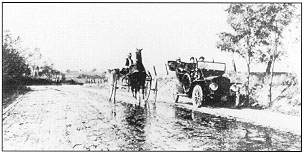
|
| 1927 |
At ARBA's annual banquet at the Palmer House in Chicago, IL, the Metropolitan Super-Highway Association announces that BPR District Engineer R. E. Toms (Montgomery, AL) is the winner of the $1,000 prize for suggesting a plan for stage construction of superhighways. The association says the plan will be the basis for superhighway construction in Chicago totalling $25 million. |
| 1982 |
President Ronald Reagan visits DOT Headquarters to address members of its Senior Executive Service. Later, he meets with Secretary of Transportation Drew Lewis and other DOT officials. Administrator Ray Barnhart makes the case for a user tax increase to address the deteriorating condition of the Nation's highways and bridges. (See January 6, 1983) |
January 13
| 1960 |
Under the Federal-Aid Highway Act of 1959, a BPR report is transmitted to Congress on extending the Interstate System to Alaska and Hawaii. The report recommends 50 miles in Hawaii, but states that Interstate mileage is not warranted in Alaska. |
| 1961 |
Secretary of Commerce Frederick H. Mueller transmits BPR's first Highway Cost Allocation study to Congress, pursuant to Section 210 of the Highway Revenue Act of 1956. The objective is to provide Congress with information it might use in developing legislation to make a more equitable allocation of Federal taxes for the support of the Federal-aid highway program. |
January 14
| 1909 |
Director Logan Page addresses a good roads convention in Salt Lake City, UT, on the roads of different sections of the country, compared with roads in other countries. "Suffice it to say," he explains, "that the principle of state aid and supervision constitutes the germ of the only road administration which has proven successful in other countries." |
|
| 1956 |
BPR Commissioner F. V. du Pont resigns to work as a consultant to Secretary of Commerce Sinclair Weeks in furthering President Dwight D. Eisenhower's road program. Secretary Weeks announces that Charles D. "Cap" Curtiss, Deputy Commissioner in charge of the Division of Finance and Management, will assume the administrative duties of Commissioner.
|
January 15
| 1911 |
J. E. Pennybacker, Jr., OPR's Chief of Road Economics and Secretary of the American Association for Highway Improvement, addresses the South Carolina Good Roads Association in Columbia on "The Advantages of Co-Operation Between State Highway Associations and the American Association of Highway Improvement." (See November 22, 1910.)
|
|
| 1923 |
At the 14th American Good Roads Show, held in conjunction with ARBA's convention in Chicago, IL, BPR's exhibit covers more than 2,000 square feet. Included is a 20-foot long model of a typical mountain forest road, color photos of Federal-aid roads around the country and BPR's experimental and research work, and stereopticon lantern slides of road construction. |
| 1912 |
During AAA's First Annual Federal Aid Good Roads Convention, U.S. Senator J. H. Bankhead of Alabama says, "I hope to live long enough to see the realization of these things that we are here discussing . . . . God being my helper and preserving my life, I intend, sir, to devote that time in urging upon Congress and the country the adoption of a system of National and State aid in cooperation." (The Federal Aid Road Act of 1916 is sometimes called the "Bankhead Bill.") |
| 1963 |
In Jordan, the Jerusalem-Dead Sea Highway opens. His Majesty King Hussein and his Government issue a Royal Decree thanking BPR's Jordan Division for its work on the project (Division Engineer John C. Sprague, Construction and Maintenance Engineer Harrison Hawkins, and Construction and Maintenance Superintendents Leon B. Hirsch and Robert L. James). |
| 1967 |
Alan S. Boyd is sworn in as the first U.S. Secretary of Transportation. Judge James Durfee of the U.S. Court of Claims administers the oath in the East Room of the White House as Mrs. Boyd and President and Mrs. Johnson look on. The President says Secretary Boyd's major assignment would be to "coordinate a National Transportation Policy." |
| 1981 |
Secretary of Transportation Neil Goldschmidt transmits a report to Congress on the Everett Bypass demonstration project in Pennsylvania, authorized by the Federal-Aid Highway Act of 1976 to demonstrate how project completion time can be reduced. The lessons learned, such as concurrent review, will be applied to other projects via the FAST initiative. (See May 26, 1983.) |
January 17
| 1893 |
The second convention of the National League for Good Roads is held in Washington, DC, to advocate creation of a National Highway Commission. General Roy Stone is acting secretary of the league, which was formed last October in Chicago, IL. (See October 20, 1892.) |
| 1969 |
Director of Public Roads Frank Turner signs Project Prospectus No. 1 for a demonstration project to demonstrate the savings, efficiency, and accuracy of using "Aerial Analytical Triangulation Methods Utilizing Stereocomparators and Electronic Computers." |
| 1970 |
FHWA issues implementing instructions for the Urban Highway Public Transportation Program established by Section 111 of the 1970 Federal-Aid Highway Act. The section allows Federal-aid highway funding for "the construction of exclusive or preferential bus lanes, highway traffic control devices, bus passenger loading areas and facilities, including shelters, as well as fringe and transportation corridor parking facilities to serve bus and other public mass transportation passengers. |
| 1994 |
The Northridge Earthquake strikes the Los Angeles area at 4:31 a.m., lasts less than 1 minute, and snaps segments of I-5, I-10/Santa Monica Freeway (the busiest in the world), and other highways. Secretary of Transportation Federico Pea and Administrator Rodney E. Slater, dispatched by President Bill Clinton, are the first Federal officials to arrive at the site. 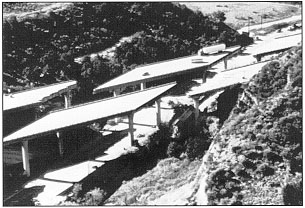
|
January 18
| 1911 |
An OPR engineer begins a thorough study of roads in Mobile County, AL, particularly those under county supervision. During the review, which concludes March 6, he finds that except for a few shell roads, the county does not have any improved roads. |
| 1912 |
The Kansas State Good Roads Association's 2-day 10th Annual Convention in Emporia concludes. Director Logan Page delivers an address on the value of good roads, stating that at present, road work is carried on inefficiently. Noting that about 100,000 township road offices exercise separate authority with no one to direct them, he asks, "What would a great railroad organization do if each of its section bosses were permitted to buy all of the material for the construction and maintenance of his division of the railroad?" At the close of his address, Page invites questions. Asked if a county surveyor, instead of a State engineer, could handle road work, Page responds, "It would be just as sensible to appoint an astrologer to build the good roads." "The money that is appropriated for good roads should be judiciously spent or it will accomplish nothing." |
| 1961 |
1961 Maryland is the first State to enter into a "Bonus Agreement" on control of outdoor advertising under the Federal-Aid Highway Act of 1958, providing for a 1-percent increase in the Federal share of Interstate highway projects. 
|
January 19
| 1893 |
Representatives of the National League for Good Roads appear before the House Agriculture Committee in support of a National Highway Commission. General Roy Stone testifies that the group unanimously voted against Federal funds for road building. |
| 1912 |
Director Logan Page addresses a meeting of the American Society of Civil Engineers at Society House in New York City. His subject is the need for different road standards in different parts of the country. |
| 1962 |
The first of 13 Uniform Traffic Control Conferences, sponsored by BPR, AASHO, the National Association of County Officials, and the American Municipal Association, gets underway in Washington to encourage effective action in implementing 1961 MUTCD traffic standards. |
January 20
| 1905 |
The second day of the National Good Roads Association's midwinter meeting, in Jacksonville, FL, begins at 10:30 a.m. Colonel W. L. Spoon, the OPRI expert in charge of the object lesson road under construction during the convention, discusses construction of sand-clay roads, saying sand and clay make the finest roads in the world, as demonstrated by the beach road along the Florida coast. On the 21st, the delegates meet at the Board of Trade, then go to the northern part of the city where they inspect the road being built by Spoon and road expert J. H. Dodge, Director Martin Dodge's brother. |
| 1908 |
OPR begins an 8-week course of theoretical and practical instruction for engineer trainees in Washington, DC (salary: $60 per month and field expenses). Lectures and laboratory work cover problems in road construction, petrography and mineralogy, dust preventatives, plotting, field notes, estimates, types of surface, and the history and development of road building. |
January 21
| 1897 |
In an address to the State Board of Agriculture in Augusta, ME, General Roy Stone discusses the history of road building in the U.S., the role of farmers in the Good Roads movement, the cost of bad roads versus good roads, and the value of convict labor. "Good roads are the highways to wealth." |
| 1903 |
Director Martin Dodge participates in the Arkansas Good Roads Convention (January 21-22), delivering a speech on "Federal and State Aid to Roads." Over 1,200 delegates attend, voting to change the name of the "Good Roads League of the State of Arkansas" to the "Arkansas Good Roads Association," with a permanent office in Little Rock. A report in Good Roads Magazine describes Dodge as "the bright particular star of the gathering, and his presence did much to inspire the delegates with greater enthusiasm for the work." |
| 1915 |
A Joint Congressional Committee established by the Post Office Appropriation Act for FY 1913 issues its final report on Federal-aid in construction of post roads. The committee agreed unanimously on the need and constitutionality of Federal-aid, but not on any special policy or how much should be granted. The report notes that, "permanent highways will result in very considerable adoption of auto-truck hauling in preference to rail transportation where the distance is within a half day's run." |
| 1943 |
Commissioner Thomas MacDonald addresses the American Society of Civil Engineers' Annual Meeting in New York City on the "Proposed Interregional Highway System as it Affects Cities": "If the interregional highway system is to be truly effective for the uses for which it is designed, it must be conceived only after a careful and complete functional study of the city organism." "The proposed interregional highway system may well constitute the key to the functional rebuilding of our cities [but] the cities themselves must recognize that while opportunity is at hand, they must exploit it to the fullest, if they are to survive." |
| 1959 |
At AASHO's annual meeting in Dallas, TX, Federal Highway Administrator Bertram Tallamy presents the George S. Bartlett Award to Chief Engineer Rex Whitton of the Missouri State Highway Commission. Tallamy says, "There is none of us whose heart is not full of agreement and genuine joy as we meet to honor one among us who is universally loved and respected by those who have known him longest and best. To have that said by one's fellows is life's highest accolade." |
January 22
| 1923 |
BPR District Engineer J. W. Johnson and his assistant, A. V. Williamson, conclude a 3-day meeting in Denver with Colorado's State Highway Engineer, Major L. D. Blauvelt, and other State highway officials. The purpose of the meeting was to bring about closer cooperation by increasing the State's understanding of Federal requirements and procedures. |
| 1934 |
A memo from Chief Thomas MacDonald establishes a district office in Washington, DC, for park and forest highway work in the eastern U.S., headed by H. J. Spelman. The office is the forerunner of today's Eastern Federal Lands Highway Division Office in Sterling, VA. 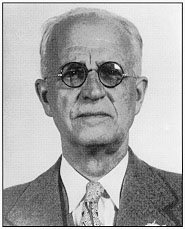
|
| 1969 |
Chief Justice Earl Warren administers the oath of office to Secretary of Transportation John A. Volpe in a White House ceremony as President Richard Nixon looks on. Volpe is the only Federal Highway Administrator to become Secretary. (See September 18, 1990, and October 12, 1956.) |
| 1970 |
In a speech to the National Limestone Institute in Washington, DC, Administrator Frank Turner comments on the New Year's Day signing of NEPA: "Our nation--whether in its cities or its rural areas--cannot live without transportation, and highways provide the overwhelming proportion of that transportation. But highways can and must be made compatible with and enhance the environment, at the same time that they provide essential transportation services." |
January 23
| 1904 |
The annual dinner of the Automobile Club of America turns into a Good Roads Dinner, with guests such as Representative W. P. Brownlow, Colonel Albert A. Pope, General Nelson A. Miles, and OPR's Director Martin Dodge, M. O. Eldridge, and James W. Abbott. For introducing good roads legislation, Brownlow is given three rousing cheers when he rises to speak. (See December 1, 1902.) |
| 1922 |
President Warren Harding's 5-day National Agricultural Conference opens in Washington, DC. The Highway Transportation Committee's report calls for continued aid to improve interstate, postal, and farm-to-market roads; increased safety; the putting aside of all partisan or political considerations; and coordination of railways, highways, and waterways so that each may carry the kind of traffic it can most economically, expeditiously, and efficiently serve. |
| 1965 |
A.F. Chiglione represents BRP as U.S. and Canadian officials meet in Ottawa to discuss engineering factors involved in reconstructing or paving the Alaska Highway. Also in attendance are Burke Riley of the Interior Department's Juneau office and representatives of Canada's Public Works and Northern Affairs Departments. 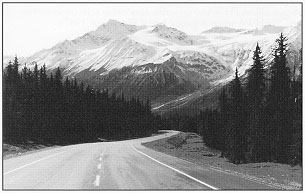
|
January 24
| 1947 |
Commissioner Thomas MacDonald speaks on "Interstate or Super Highways" before the North Carolina Society of Engineers: "The need to plan and to get underway the urban distribution and terminal facilities is paramount. Our traffic studies show that the purely urban traffic has an influence extending radially from 6 miles to 30 miles outward from the heart of the city." "It is within this urban zone that the Public Roads Administration will be most interested in the development of the Interstate System." |
| 1977 |
In a telegram to the Florida DOT, Administrator Norbert Tiemann indicates FHWA will rescind all I-95 location approvals between Fort Pierce and North Palm Beach to ensure restudy of a location east of Florida's Turnpike. On January 14, during a hearing on the issue at the Tequesta Village Hall, Tiemann had stated, "I, personally, favor the eastern route." |
| 1911 |
In Harrisburg, the Pennsylvania Road Improvement Train makes the first of 165 stops. Sponsored by OPR, the Pennsylvania Railroad, and the State Highway Department, the train includes OPR's J. H. Dodge and D. H. Winslow, who lecture, demonstrate the exhibits, and teach farmers to make split-log drags and other home-made equipment for building and maintaining roads. |
| 1950 |
U.S. Senator Joseph C. O'Mahoney of Wyoming, Chairman of the Joint Committee on the Economic Report, transmits the committee's report titled Highways and the Nation's Economy to Members of Congress. The introduction notes that "the maintenance of maximum production, employment, and purchasing power in the Nation [is directly related to] the development and maintenance of an adequate system of highways." The report acknowledges BPR's help in compiling data, particularly citing A. C. Clark, H. A. Radzikowski, and S. E. Ridge as well as the statistical work of Mrs. J. K. Baker. |
| 1974 |
Deputy Administrator Ralph Bartelsmeyer dies unexpectedly of kidney failure at Sibley Memorial Hospital in Washington, DC. He had been appointed Director of BPR in 1969, when it was a bureau within FHWA, and became Deputy Administrator when BPR was eliminated on August 10, 1970. Bartelsmeyer served as Acting Administrator from July 1972 to June 1973 between the departure of Administrator Frank Turner and the arrival of Administrator Norbert Tiemann. 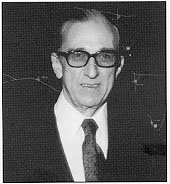
Deputy Federal Highway Administrator |
January 26
| 1904 |
OPRI Director Martin Dodge joins a committee of good roads advocates, about 75 strong, at the Raleigh Hotel in Washington to discuss ways of securing government aid in construction of good roads. At 4 o'clock, the group visits President Theodore Roosevelt, who tells them he is sympathetic to their cause "because we are a civilized people, and we cannot afford to have barbaric methods of communication." "The people of our country have solved the problem of railroad transportation . . . and what is most needed now is that some attention should be paid to the question of how the farmer can get his products most cheaply to the lines of transportation." |
| 1942 |
Gloria M. Campbell begins work with PRA as a CAF-1 earning $105 per month, "including half days on Saturday and no overtime pay," as she later put it. She served the PRA/BPR/FHWA in its San Francisco office for 52 years, before passing away on October 24, 1994, after experiencing chest pains while at work in the morning. Ms. Campbell is believed to have served more years with the FHWA than any other employee. 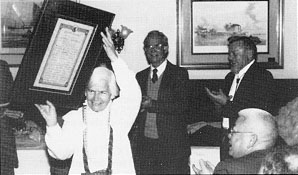
|
| 1968 |
FHWA asks the Delaware River Port Authority for detailed information on toll increases on the bridges in the Camden, NJ, area. Administrator Lowell Bridwell requests that the increases be delayed until a review is completed under a provision of the General Bridge Act of 1946 that allows FHWA to prescribe reasonable tolls on interstate bridges (a Corps of Engineers responsibility transferred to FHWA when it joined USDOT in April 1967). |
January 27
| 1914 |
OPR's George R. Marshall and Professor R.J. Potts of Texas A&M University conduct a school on good roads as part of the Third Annual Convention of the Texas Good Roads Association in Fort Worth. |
| 1959 |
Amid cheers from over 160 freeway foes, the San Francisco Board of Supervisors adopts a resolution deleting six of the nine proposed freeways in the city. An editorial in the San Francisco Chronicle endorses this "rebellion against the bull-dozing, home-displacing, land-gobbling freeway monster." |
| 1962 |
Calling it a "marvelous asset," Governor Gaylord Nelson opens the first 5-mile segment of Milwaukee County Expressway in Wisconsin. More than 200 people, including State, county, city, and suburban officials, are present for the ribbon cutting. The remainder of the 15-mile east-west Interstate freeway, westerly from the downtown area, is scheduled to be completed next year. |
January 28
| 1920 |
Commissioner P. P. Claxton of the Bureau of Education, Department of the Interior, convenes a committee to assess the need for college-educated men able to cope with the many problems of highway and highway transportation engineering. T. Warren Allen and A. T. Goldbeck represent BPR. On May 14, 1920, Claxton will convene the first Conference on Highway Engineering and Highway Transport Education, telling participants they are responsible for "determining and stating as clearly as possible the needs and the qualifications for trained men" for highway development. Chief Thomas MacDonald addresses the conference on "The Widening Field for Engineers in Highway Improvement and Their Training for the Field." 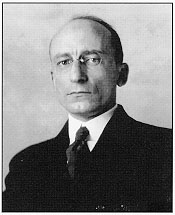
Division of Tests Bureau of Public Roads |
January 29
| 1946 |
During AASHO's Annual Meeting in Oklahoma City, OK, Commissioner Thomas MacDonald is made an honorary member of the Kiowa Tribe, with the name of Ho on oye Keah ("Father of Great Trails") in a ceremony conducted by Chief Jasper Saunkeah and his daughter, Vivian Saunkeah Davis. AASHO President Herman A. MacDonald is honored with the name of Dom ate ton keah ("Pilgrim Father from Plymouth Rock"). War bonnets are given to both: "For untold years the possession of a war bonnet in our Tribe was a mark of high achievement. Every feather in it had a meaning of demonstrated courage and honorable action. We are proud to have you wear them as our brothers." |
| 1971 |
FHWA issues Instructional Memorandum (IM) 20-1-71 on "Guidelines for Minimizing Possible Soil Erosion From Highway Construction." The first IM on prevention, control, and abatement of water pollution resulting from soil erosion had been issued on June 7, 1966. The guidelines issued today are in response to Section 136 ("Economic, Social, Environmental, and Other Impact") of the 1970 Federal-Aid Highway Act. |
| 1918 |
BPR issues the certificate of completion for the first project completed under the Federal Aid Road Act of 1916in Contra Costa County, CA. The 2.55-mile project is on the road from Richmond, CA, to the Alameda County line. Work consisted of grading the roadbed, draining and installing culverts flanked with concrete headwalls, and laying a portland cement concrete base, 20 feet wide, with a bituminous concrete top. The pavement is 20 feet wide. Total cost for the project: $53,938.85.
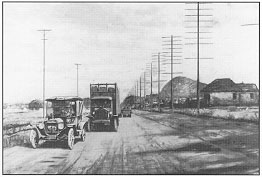
|
January 31
| 1968 |
Administrator Lowell Bridwell announces a 2-year research contract with the New York State Department of Motor Vehicles to study crash experience of at least 27 makes of passenger cars. The purpose is to evaluate the effect of design variables of passenger cars on the frequency and severity of crashes and injuries. |
| 1975 |
FHWA's Inter-American Office closes after 37 years of operation. |
Also in January
| 1977 |
FHWA News reports that Associate Administrator for Safety Howard L. Anderson accepted a trucker's challenge by taking a test ride in a Yellow Freight truck. Anderson, whose responsibilities include overseeing the Bureau of Motor Carrier Safety but had never experienced a trucker's life, was attending a symposium sponsored by the Professional Drivers' Council (PROD); during a question and answer session, one of the drivers asked him to test ride "one of the notoriously rough riding, hard to control trucks that are equipped with rubber block suspension systems, to learn first-hand of the conditions that drivers live under." With PROD member Bud Mayer driving, Anderson traveled from Ann Arbor, MI, to Effingham, IL, on I-94, I-69, and I-70, leaving him feeling "mentally alert but sore and battered physically." He noted "a great variation" in the quality of highway construction and maintenance, camaraderie among the truckers, and the "utter frustration" of the drivers. Anderson summed up his experience of the trucker's life: "Anything but an easy life!" |


